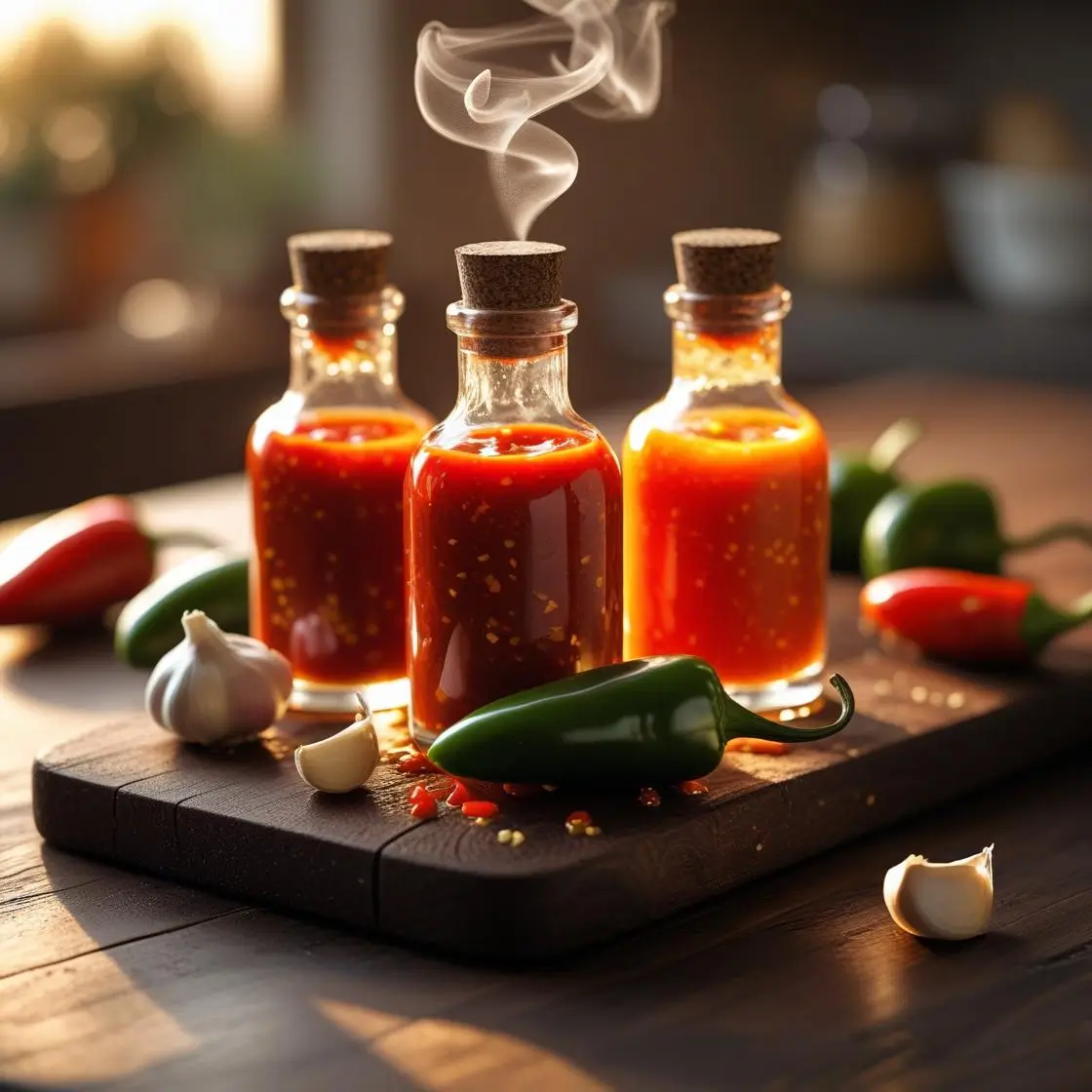Nothing compares to the satisfaction of creating your own fiery hot sauce recipe from scratch. Whether you’re a heat-seeking enthusiast or simply someone who appreciates bold flavors, homemade hot sauce offers unlimited possibilities for customization. Furthermore, making your own sauce allows you to control every ingredient, ensuring both quality and taste meet your exact preferences. In addition to being incredibly rewarding, this process connects you with centuries-old culinary traditions while simultaneously giving you the freedom to experiment with modern flavor combinations.
Table of Contents
- Why I Absolutely Love This Hot Sauce Recipe
- Key Ingredients That Make the Magic Happen
- Step-by-Step Guide to Hot Sauce Perfection
- Storage Solutions for Maximum Freshness
- Professional Tips for Hot Sauce Success
- More Delicious Hot Sauce Recipe Variations
- What to Serve With This Hot Sauce Recipe

Why I Absolutely Love This Hot Sauce Recipe
First and foremost, this recipe has become my go-to because it strikes the perfect balance between heat and flavor. Moreover, unlike store-bought versions that often rely heavily on vinegar, this homemade version celebrates the natural essence of the peppers. Additionally, the versatility of this recipe means you can easily adjust the heat level to suit different palates.
What’s more, the fermentation process not only develops complex flavors but also creates beneficial probiotics. Subsequently, you’re not just adding heat to your meals – you’re enhancing them with layers of umami and depth. Meanwhile, the cost-effectiveness compared to premium hot sauces makes this recipe particularly appealing for regular hot sauce consumers.
Key Ingredients That Make the Magic Happen
The foundation of exceptional hot sauce begins with selecting the right peppers. Consequently, I recommend using a combination of different varieties to achieve complexity. Here are the essential components:
Primary Peppers: Fresh jalapeños, serranos, or habaneros form the base, while dried chilies like chipotle or guajillo add smokiness. Furthermore, combining fresh and dried peppers creates dimensional flavor profiles that single-pepper sauces simply cannot match.
Aromatics: Garlic and onions provide essential depth. Meanwhile, fresh ginger adds subtle warmth and complexity that complements the pepper heat beautifully.
Acid Component: Apple cider vinegar serves dual purposes – preservation and tang. However, you can also incorporate citrus juice for brighter acidity.
Salt: High-quality sea salt or kosher salt is crucial for both flavor enhancement and fermentation control. Additionally, salt helps break down cell walls, releasing more pepper flavors.
Optional Enhancers: Honey balances heat with sweetness, whereas smoked paprika contributes earthy undertones. Similarly, a touch of cumin can add unexpected warmth.
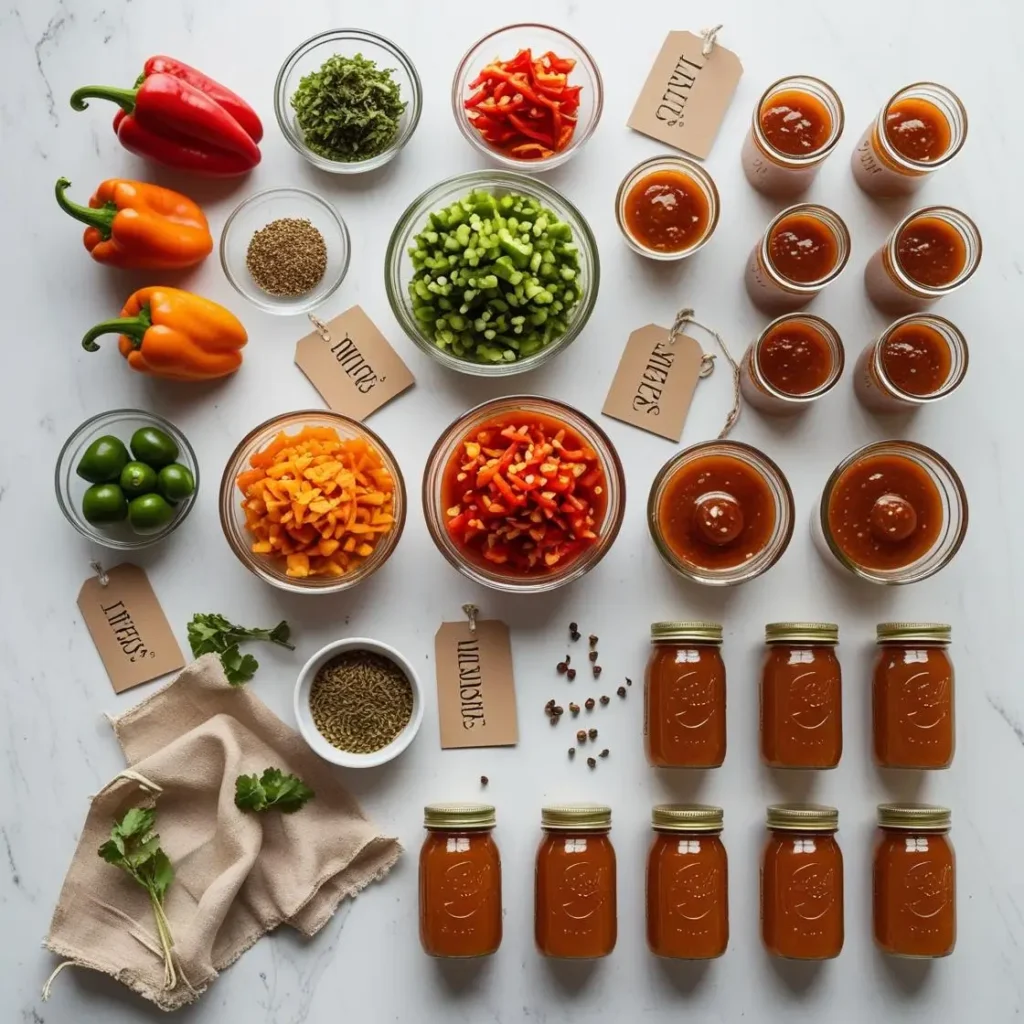
Step-by-Step Guide to Hot Sauce Perfection
Preparation Phase
Initially, gather all ingredients and sterilize your equipment with boiling water. Subsequently, this prevents unwanted bacteria from interfering with the fermentation process. Next, put on gloves to protect your hands from capsaicin oils.
Step 1: Pepper Preparation
First, wash all peppers thoroughly under cold water. Then, remove stems while deciding whether to keep seeds (for extra heat) or remove them (for milder sauce). After that, roughly chop larger peppers to ensure even processing.
Step 2: Building the Base
Meanwhile, peel and roughly chop garlic cloves and onions. Following this, combine peppers, garlic, and onions in a food processor. Subsequently, pulse until you achieve a chunky consistency rather than a smooth paste.
Step 3: Salt Addition
Next, transfer the mixture to a clean bowl and add salt gradually while mixing. Consequently, you’ll notice the mixture beginning to release moisture almost immediately. Therefore, let it sit for 15 minutes to allow proper salt distribution.
Step 4: Fermentation Setup
Afterward, pack the mixture into sterilized mason jars, leaving about an inch of headspace. Furthermore, press down firmly to eliminate air bubbles and ensure the mixture stays submerged under its own brine.
Step 5: Initial Fermentation
Subsequently, cover jars with cheesecloth or coffee filters secured with rubber bands. Then, place in a cool, dark location for 3-7 days. During this time, check daily and press down any floating pieces.
Step 6: Blending and Finishing
Finally, after fermentation completes, blend the mixture with vinegar until smooth. Additionally, strain through fine mesh if you prefer a smoother consistency. Lastly, taste and adjust seasoning as needed.
Storage Solutions for Maximum Freshness
Proper storage ensures your hot sauce maintains quality and safety over time. Initially, transfer finished sauce to sterilized bottles or jars with tight-fitting lids. Subsequently, refrigerated hot sauce typically lasts 6-12 months, while properly processed sauce can last even longer.
Moreover, always use clean utensils when serving to prevent contamination. Additionally, if you notice any off odors, unusual colors, or mold growth, discard the sauce immediately. Furthermore, labeling bottles with creation dates helps track freshness and potency over time.
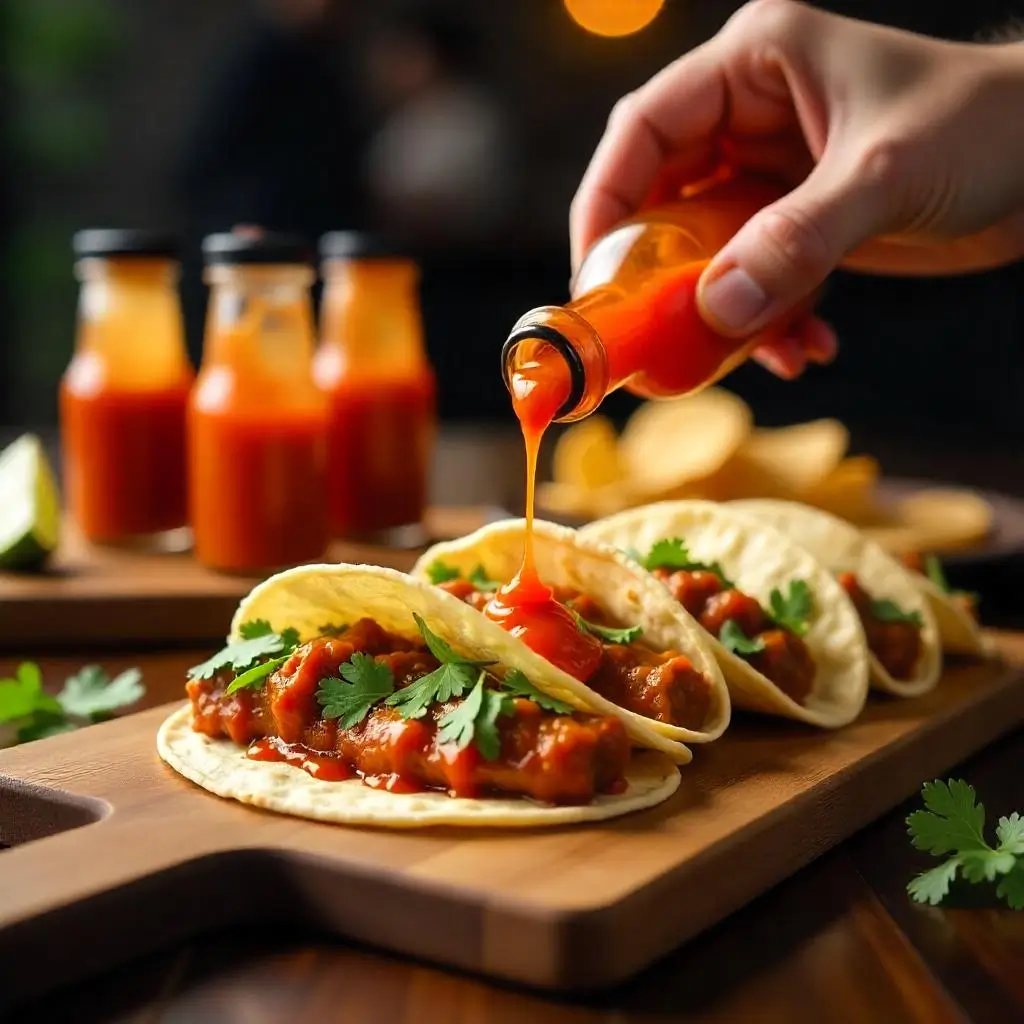
Professional Tips for Hot Sauce Success
Temperature Control: Maintaining consistent temperatures during fermentation produces better results. Consequently, avoid areas with temperature fluctuations like near heating vents or windows.
Patience Pays Off: Longer fermentation periods generally develop more complex flavors. Therefore, don’t rush the process if you want exceptional depth.
Tasting Strategy: Since heat levels can vary significantly between pepper batches, always taste-test throughout the process. Meanwhile, keep notes about successful combinations for future reference.
Equipment Matters: Stainless steel or glass equipment prevents unwanted flavors from transferring. Additionally, wooden spoons work better than metal for stirring during fermentation.
Safety First: Always wear gloves when handling hot peppers. Furthermore, work in well-ventilated areas to avoid respiratory irritation from capsaicin vapors.
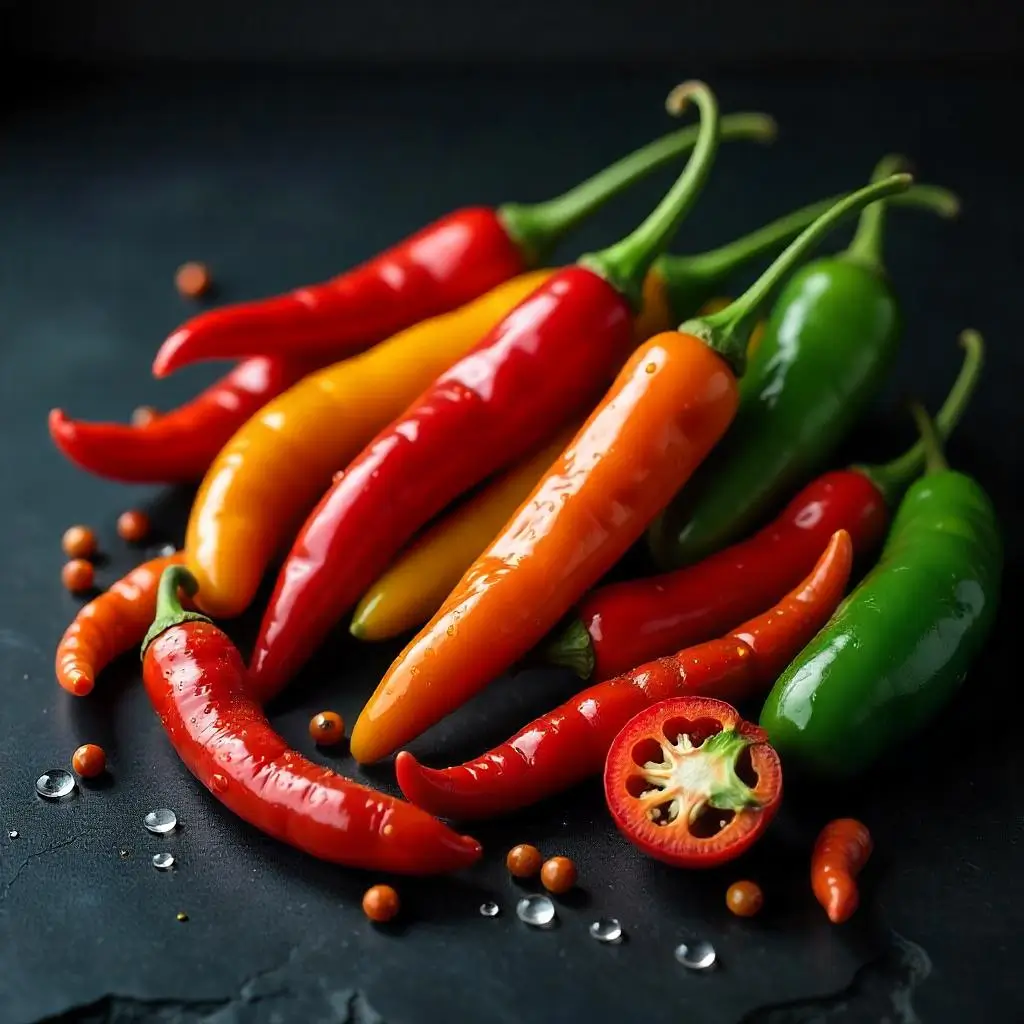
More Delicious Hot Sauce Recipe Variations
Sweet Heat Pineapple Sauce
Similarly, combining jalapeños with fresh pineapple creates tropical heat that complements grilled meats perfectly. Additionally, a touch of lime juice brightens the overall flavor profile.
Chipotle Tahini Sauce
Alternatively, focus on dried chipotle peppers for deep, smoky heat. Furthermore, adding a small amount of chocolate creates unexpected complexity that pairs beautifully with Mexican cuisine.
Green Goddess Hot Sauce
Meanwhile, using only green peppers like serranos and poblanos with fresh herbs creates a vibrant, garden-fresh sauce. Subsequently, this version works exceptionally well with seafood and fresh vegetables.
Carolina Reaper Challenge Sauce
For extreme heat enthusiasts, however, Carolina Reapers provide intense heat that requires careful handling. Consequently, use sparingly and always warn others about the extreme heat level.
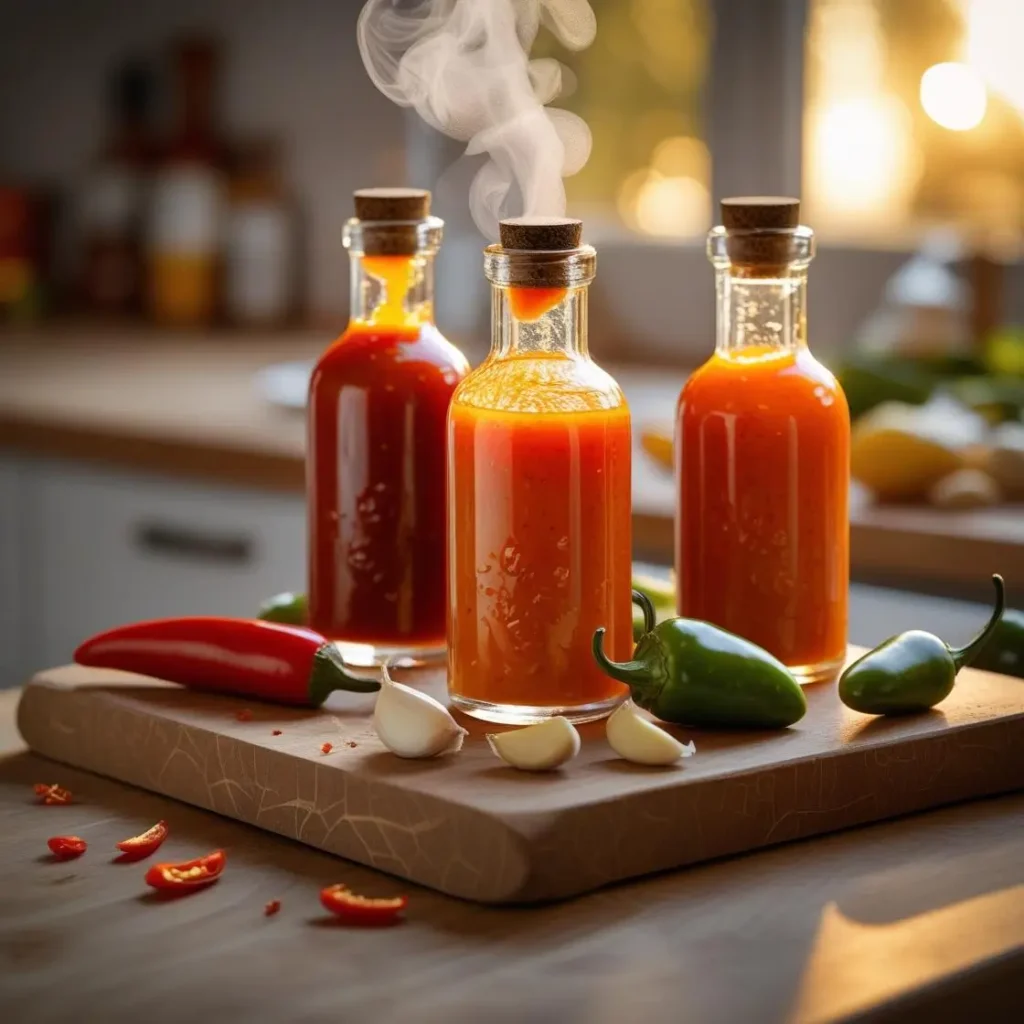
What to Serve With This Hot Sauce Recipe
Creating homemade hot sauce transforms ordinary meals into extraordinary culinary experiences. Moreover, the process itself becomes deeply satisfying as you develop your signature blend. Additionally, sharing your homemade creations with friends and family creates lasting memories around the dinner table.
Furthermore, once you master the basic technique, endless variations become possible. Subsequently, you’ll find yourself experimenting with different pepper combinations, fermentation times, and flavor additions. Finally, the cost savings and quality control make homemade hot sauce both practical and delicious.
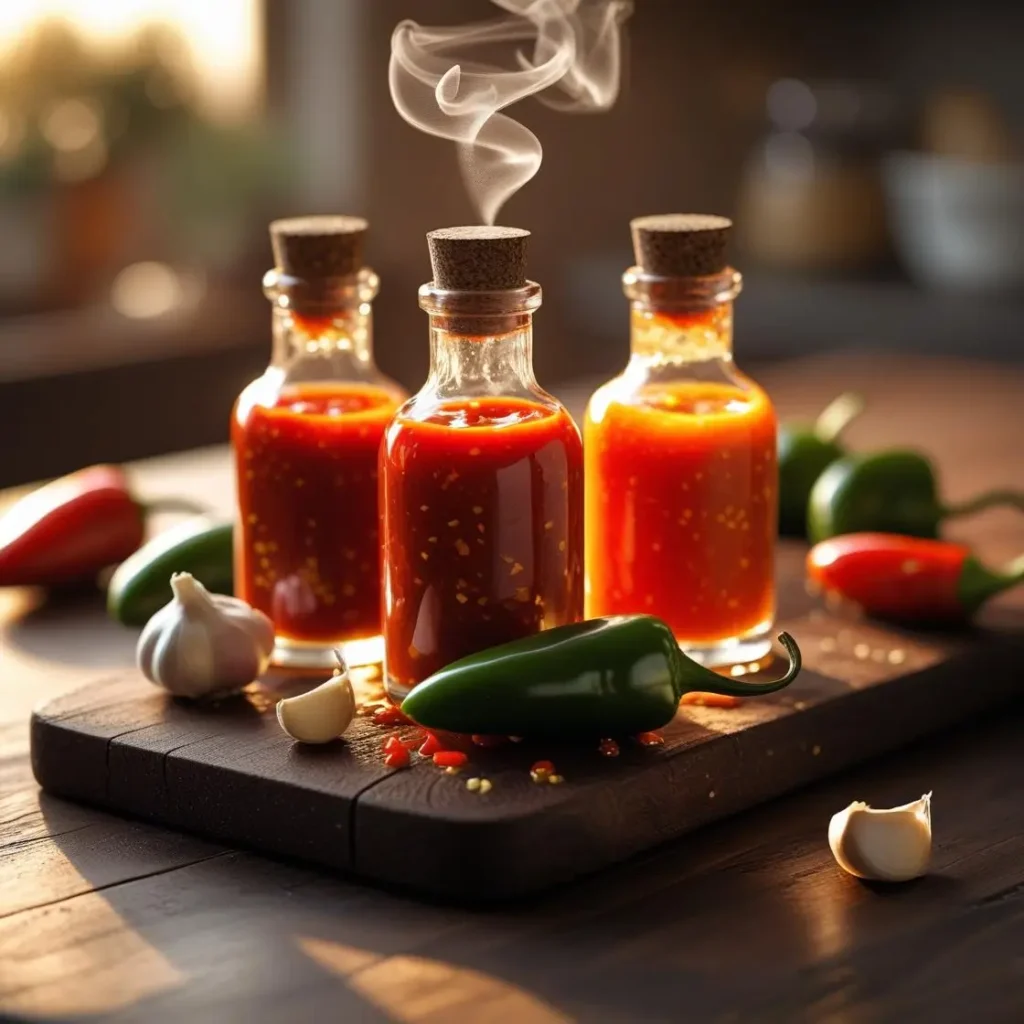
“Easy Hot Sauce Recipe: A Quick Guide to Making Your Own”
Description
Learn to make incredible homemade hot sauce with our step-by-step fermented recipe. Control heat levels, save money, and create your signature blend!
Ingredients
Instructions
- Prepare Workspace: First, sterilize all equipment with boiling water. Then, put on gloves to protect hands.
- Process Peppers: Next, wash peppers and remove stems. Subsequently, roughly chop and add to food processor with garlic and onion.
- Create Base Mixture: Pulse ingredients until chunky. Afterward, transfer to bowl and mix in salt thoroughly.
- Begin Fermentation: Pack mixture into sterilized jars, leaving 1-inch headspace. Then, cover with cheesecloth and secure with rubber bands.
- Fermentation Period: Place in cool, dark location for 3-7 days. Meanwhile, check daily and press down any floating pieces.
- Final Processing: After fermentation, blend mixture with vinegar until smooth. Finally, strain if desired and adjust seasoning.
- Storage: Transfer to sterilized bottles and refrigerate. Subsequently, sauce will keep for 6-12 months refrigerated.
Notes
- Fermentation time affects flavor intensity
Remove seeds for milder heat
Always taste-test before final seasoning
Label bottles with date for freshness tracking
